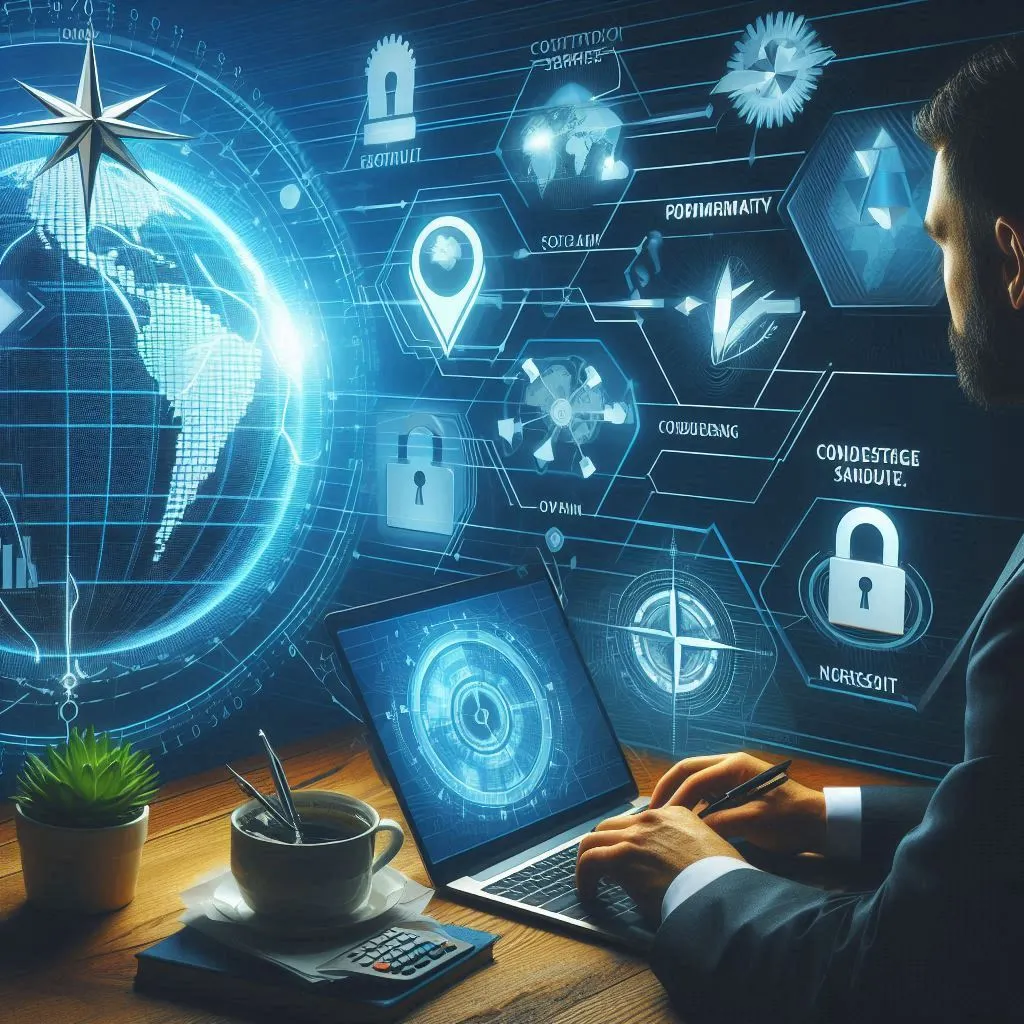Navigating the Cybersecurity Landscape: Trends and Predictions

The cybersecurity sector will have undergone significant transformation by 2024. Because of the speed at which technology is advancing, the dynamic nature of threat environments, and our increasing dependence on digital infrastructure, proactive measures are required to safeguard our online security. In this blog post, we'll examine the major trends affecting the cybersecurity landscape in the coming year.
AI and Machine Learning Integration
Cybersecurity is being revolutionized by AI and machine learning. Real-time AI algorithms search through massive volumes of data for irregularities and possible risks. ML models learn from past data to become more accurate over time. AI-powered autonomous security bots quickly identify and neutralize threats, cutting down on damage and speeding up reaction times.
IoT Security Challenges
There are new security concerns as a result of the proliferation of Internet of Things (IoT) devices. These networked devices are open to assaults because they frequently lack strong security measures. IoT network security should be an organization's top priority. Strong authentication, encryption, and frequent vulnerability assessments must be put into place. Patching these vulnerabilities becomes more and more necessary as the number of IoT devices increases.
Remote Work and Cybersecurity Implications
Concerns over cybersecurity have grown in tandem with the rise in remote employment. Because employees access company networks from different places, there is a greater surface area for attacks. Security and production must be balanced. Employers must mandate the use of multi-factor authentication, provide secure remote access solutions, and train staff on safe practices. Preserving sensitive data while preserving productivity is the aim.
Quantum Computing and Its Impact
Quantum computing presents opportunities as well as hazards. Although quantum computers have processing power never before seen, they also pose a threat to traditional encryption methods. Organizations need to get ready for encryption that is quantum secure. Post-quantum algorithms and safe key exchange protocols require much research. Time is of the essence in the struggle against quantum threats.
Evolution of Phishing Attacks
Phishing attacks are always evolving, becoming more targeted and sophisticated. Cybercriminals exploit human psychology by employing social engineering tactics. Businesses must invest in user awareness training to enable employees to recognize phishing efforts. To stop these attacks, robust email screening and authentication protocols are crucial.
Mobile Security Focus
Mobile devices are the specific target of cyberattacks. Organizations must employ containerization, require device encryption, and develop secure mobile apps in order to keep business-critical data separate. Using zero-trust methods, where access is continuously verified, sensitive data on mobile devices is safeguarded.
Zero Trust Security Model
These days, the perimeter-based security paradigm is inadequate and out of date. Zero trust emphasizes continuous verification regardless of the device or location. Organizations should implement least-privilege access restrictions, network traffic monitoring, and user identity verification at every point of contact. Zero trust adapts to shifting circumstances and lessens insider dangers.
Addressing the Cybersecurity Skills Gap
There is a greater need for skilled cybersecurity experts than there is supply. Organizations must provide funding for education and training initiatives. Collaboration between the public, private, and academic sectors might help reduce the skills gap. Certifications, apprenticeships, and mentoring programs are crucial for producing the next generation of cybersecurity experts.
Blockchain and Enhanced Data Protection
Blockchain technology ensures transactions are safe and immutable. Apart from cryptocurrencies, it might enhance data security. Three areas where blockchain shines include secure supply chain monitoring, decentralized identity management, and privacy-protecting smart contracts. Companies should think about the potential applications for it.
Conclusion
It is critical for enterprises to keep aware of these patterns as they adjust to the shifting threat landscape. We can successfully manage the complexity of cybersecurity in 2024 and beyond by embracing emerging technology, incorporating security into DevOps processes, and encouraging a resilient attitude.
